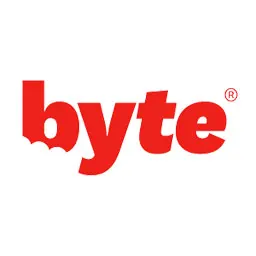How to Fix Misaligned Teeth: Options, Cost & Insurance

Table of Contents
- Affects of Misalignment
- Orthodontic Options for Misalignment
- Other Options
- Get Help from a Dentist First
- References
Misaligned teeth are common, and more adults are pursuing orthodontics treatment to improve their bite, oral health, and smile.
Traditional braces, lingual braces, retainers, and clear teeth aligners are all options for orthodontics treatment. Some of these options are more expensive and not covered by dental insurance, but they could be a great option for your oral health and appearance.
Misalignment Does Not Just Affect Your Smile
Dentists call the misalignment of teeth a malocclusion. This term covers several types of misalignments, including teeth that are crooked, crowded, or too spaced out as well as underbites, and overbites.
Regardless of how your teeth are misaligned, there can be several problems associated with this that have nothing to do with your appearance. Many people want straighter teeth because they want to improve their appearance, but there are also health reasons that can motivate better teeth alignment.
For example, misaligned teeth can cause problems biting down, which can lead to unconscious grinding or clenching of teeth, especially when you are asleep or under stress. This can lead to pain, worn enamel on your teeth, and even chips or fractures in the teeth that can cause further dental damage. Misaligned teeth are also more likely to collect plaque and develop tartar in areas that are harder to clean with brushing and flossing.
Good alignment occurs when the upper teeth fit slightly over the lower teeth, with molars fitting together in a slightly overlapping way. This prevents you from biting your cheeks and tongue, allows you to effectively chew food, and makes it easier for you to clean your teeth and maintain a healthy smile.
Very few people have naturally straight teeth. Increasingly, adults are turning to orthodontics to keep their smile in better alignment.
Orthodontic Options to Improve Dental Alignment
The most common treatment to improve tooth alignment is braces. While this might bring up an image of large metal brackets and wires filling your mouth, there are now many options for orthodontic treatment that are considered “braces.”
Some of these are removable, and some are fixed to your teeth for the duration of treatment. Some are “invisible” or at least harder to see, while others may be more visible.
Your dental insurance may cover some options, but not others. Each approach has a different price tag.
We’ve outlined the primary types of braces here.
When teeth aren't correctly aligned, it is increasingly difficult to clean them properly, equating to a greater likelihood of plaque buildup leading to tooth decay.
Many people have traditional braces, which are brackets with wires attached by rubber bands or special clips, when they are teenagers, so they are very familiar with this approach to treatment. Traditional braces have been around for decades, although the process has been refined so smaller orthodontic gear is required and the process takes less time.
The most effective modern brackets are stainless steel. Many adults who choose braces ask for ceramic or porcelain brackets and sometimes wires coated in white plastic, which makes the whole system less visible during the treatment process.
Downsides
The downsides of traditional braces are familiar. They are fully visible, creating a “metal mouth” look. Even though more adults are pursuing orthodontic treatment, few want this process visible.
Traditional braces are also fully attached to the teeth, so they are not removable. They require dietary restrictions to prevent brackets and wires from coming off. You must also be more diligent about cleaning your teeth, to ensure food particles do not collect around the brackets.
Finally, traditional braces might hurt. They put lots of pressure on your teeth to adjust them into alignment, and they may also scrape against your lips or cheeks.
Benefits
Despite potential downsides, there are many benefits to traditional braces compared to other options. They are less expensive than some other options, like lingual braces, costing between $4,000 and $7,000 for treatment.
Your dental insurance plan may cover part of this cost, even if you are an adult, since traditional braces are perceived as medically necessary compared to less visible options.
Traditional braces are very effective. Many dentists and orthodontists are well-versed in applying and maintaining braces. Braces can correct a wide range of malocclusions, and treatment can take less time than other options, even for more serious misalignments.
Sometimes marketed as invisible braces, lingual braces are like traditional braces, but they are placed behind your teeth.
Some brands of lingual braces use specialized digital technology to tailor the braces to your teeth. No matter what type of lingual braces are put in place, your dentist will adjust them to help your teeth move into better alignment.
Benefits
Treatment with lingual braces is often faster than with traditional braces, taking between six months and a year. This is in part because the braces are more tailored to your individual needs early on.
Since lingual braces are placed behind your teeth, they are not visible when you speak. Even ceramic brackets and clear plastic aligners are somewhat visible, although they are harder to see than metal braces.
Downsides
Though lingual brackets can straighten your teeth in less time and are practically invisible, they are not for everyone. They do not work effectively for all types of malocclusions.
Lingual braces still force you to limit your diet. Like traditional braces, lingual braces might break if you eat crunchy or sticky food. They can also hurt your tongue or cheeks as you get used to them. It is possible that you may have a slight lisp until you get used to the presence of the braces.
Lingual braces require specialized training to apply, so you may not find an orthodontist near you who can place them. They cost between $6,000 and $13,000.
Your dental insurance is unlikely to cover this cost. Lingual braces are considered cosmetic while traditional braces might not be.
For those with slight misalignments, especially among those who have had braces before, your orthodontist may prescribe wearing a metal retainer rather than having another round of braces or getting clear aligners. Although your teeth may have shifted, they may shift back into proper alignment with less pressure from a simpler, less expensive device.
You are most likely to receive a Hawley retainer, which is a wire band fitted to your teeth that is held in place by an acrylic section.
Clear plastic aligners have exploded in popularity since the late 1990s when dentists first began offering Invisalign. Now, there are dozens of companies offering variations on these tailored aligners, either through your dentist’s office or mailed directly to your home.
Benefits
Clear aligners seem to work well for most orthodontic needs. On average, they are worn between four and nine months. Many companies promote improvements in alignment taking six months or less.
Dentists report that their adult clients prefer clear aligners because they are nearly invisible and also removable. Clear aligners do not require dietary restrictions and allow you to clean your teeth as you normally would, reducing the risk of plaque buildup in certain places around brackets.
Downsides
One of the largest downsides of clear plastic aligners is the amount of time they must be worn. Since they can be removed, like retainers, it might be easy to forget to put them in.
Most brands must be worn for at least 22 hours per day to be as quick and effective as traditional braces. They must exert constant pressure on the teeth, or the treatment time will be extended. For example, some versions of clear plastic aligners allow you to wear them at night for many years rather than for the entire day, but these treatment plans take much longer to be effective.
You might need to have “bumps” bonded to the front of certain teeth to keep the aligners from slipping off. These bumps can be somewhat visible and can feel more like traditional braces.
For people with severe misalignments, clear aligners may not be enough. You may need additional orthodontic treatment, or your orthodontist might inform you that traditional braces are the only functional option.
Other Options to Fix Misaligned Teeth
In orthodontics, tooth extractions are sometimes recommended or necessary for cases involving overcrowding, bite problems, and misalignment. With overcrowding, for example, an extraction (or multiple extractions) may be needed, so there is space for teeth to shift into their correct positions.
Dental bonding is a cosmetic procedure where a tooth-colored resin material is applied to a tooth to change its look and shape.
Bonding is often used for repairs to chipped teeth and to hide discolorations or imperfections. It can also be used to hide minor orthodontic issues like small spaces and gaps between the teeth.
Like bonding, veneers are a cosmetic option. A covering is placed over a tooth to change its appearance.
Veneers are permanent, however. To make room for the veneer, some amount of your tooth enamel will have to be removed.
Veneers may be used to fix the appearance of minor orthodontic problems, but they won’t address the underlying alignment issues. Teeth may shift over time, possibly worsening the untreated orthodontic issue.
A palate expander is an orthodontic device used to widen the jaw. It’s used to correct orthodontic issues that include crossbite and overcrowding.
A palate expander applies steady gentle pressure to widen the palate (roof of mouth). As the palate expands, new bone regenerates to support the mouth and jaw structure. Palate expanders can be removable, fixed, or surgically applied.
Headgear is an orthodontic appliance that applies gentle pressure to guide the growth of the face and jaw. Headgear is removable and most often used in the treatment of children and adolescents.
Dental splits, also known as mouth guards, are commonly used as part of a treatment plan for those who grind their teeth at night. These removable appliances fit over teeth to protect against tooth grinding damage.
More rarely, “repositioning” dental splints are used to guide jaw movement. Dental splints should only be used on a short-term basis.
Get Help From Your Dentist First
Other options for adjusting misaligned teeth include removing one or more teeth that cause crowding or problems, reshaping rough or irregular teeth, and, in rare cases, surgically reshaping teeth. Other orthodontic devices include retainers, which could require years of consistent wear to ensure your teeth stabilize.
If you have a serious enough misalignment problem that causes pain, trouble eating and speaking, and other health problems, your dental insurance is more likely to cover part of the treatment cost. However, if you need more intensive treatment, you are less likely to be able to pick your treatment option.
If your dentist recommends more moderate treatment, you may be a good candidate for at-home, clear plastic aligners. Many companies offer this option with telehealth supervision from a highly trained orthodontist.
You do not have to go into a dentist’s office. Instead, you’ll receive trays with instructions on how to follow treatment. This is a great option for people who want to improve their teeth alignment and overall appearance.
